Hit the house price down!
Editor’s note: This article comes from WeChat public account “Baker Street Detective Officer ” ( ID: bkjtag), author Jia Peilin.
Silicon Valley has always been the focus and center of the world’s technology and the Internet.
Behind the general’s reputation, there must be cold bones of millions of soldiers, and companies in Silicon Valley are no exception. In recent years, with the rise of Silicon Valley, the aboriginal opposition has become increasingly fierce, and it has the meaning of “people and gods are angry.”
Recently, foreign media have revealed that affordable housing for the homeless in the west coast of the United States, especially in California’s Silicon Valley, has become urgent. After years of no growth and increasing housing prices, more and more locals are unable to enjoy affordable housing, and even live on the street without paying rent.
The “culprits” are these big guys in Silicon Valley.
Due to the wave of opposition and protests, many Silicon Valley technology companies have recently promised to invest a lot of money to help the government build affordable housing to ease the housing pressure of ordinary people. But how effective are these promises in the future?
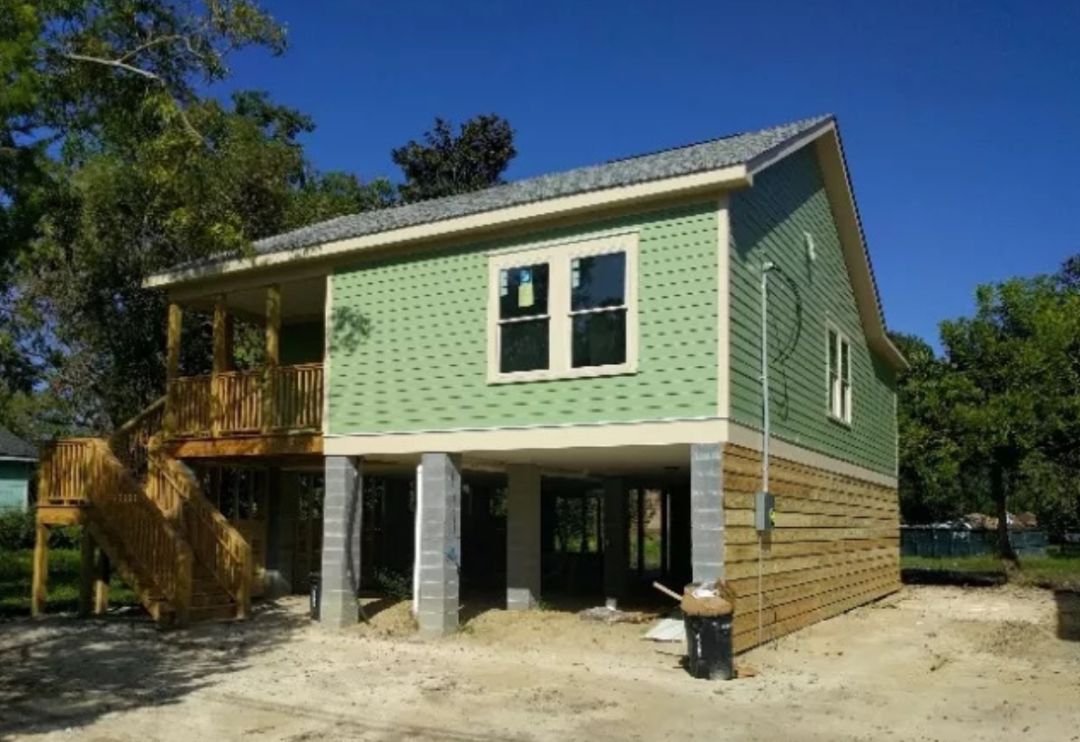
01 Where is the crisis?
Affordable housing in the United States has a long history.
Affordable housing in the United States begins with the care of the homeless. The government invests in affordable housing for some homeless people to apply for, and solves the secondary effects of their occupation of streets and wasteland. . Later, as housing prices in some areas exceeded the range afforded by ordinary people, the government also began to apply affordable housing to families and citizens who did not meet the local average income standards.
In the United States, homelessness is a long-standing social phenomenon, and it has become increasingly prominent as the times change. The seemingly perfect social welfare system brings with it a growing number of homeless people.
According to the 2017 statistics from the US Department of Housing and Urban Development, at that time, as many as 500,000 homeless people in the United States were wandering on the streets. After 2015, the surge in homelessness in the West Coast (especially California) has even triggered local governments to declare a state of emergency.
In 2016, Charleston police uprooted Tent City (tent gathering place) set up in the city by homeless people, which led to protesters’ march.
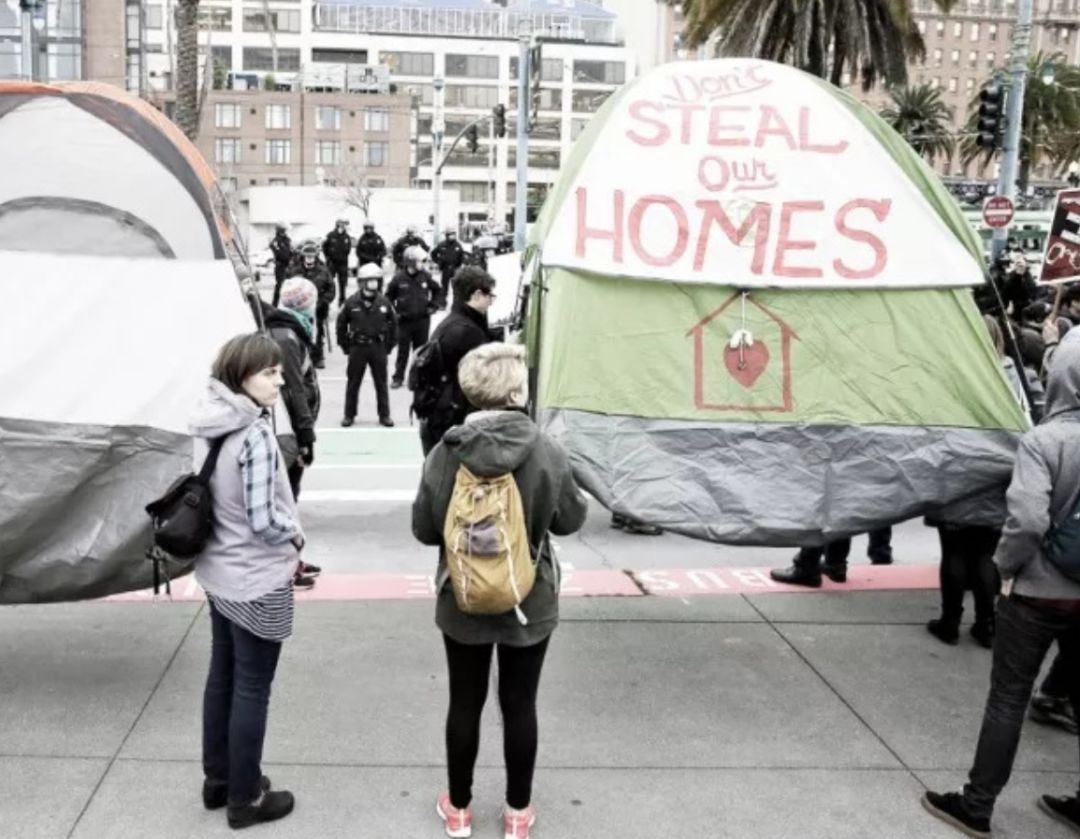
The US government can be described as a “headache” for the homeless: the shelters set up are too restrictive and the space is small, so no one wants to go; affordable housing is too expensive and the conditions are slightly higher. Although there are also factors such as the economic downturn and lower income, the end result is more and more homeless people, flooding the streets and alleys under the bridges.
The most concentrated areas of homelessness are California and Silicon Valley. According to statistics, California currently gathers a quarter of the homeless in the United States. Silicon Valley, as the most prosperous area, has the most complete facilities and is naturally favored by the homeless. In the San Francisco Bay Area, even up to 64% of people have no permanent residence.
The homelessness gathered in California’s Silicon Valley is not without reason.
Silicon Valley has been around for a long time. Especially now that the value of technology companies has been rising, the impact on finance and real estate has become even greater. Tens of billions of dollars worth of technology companies, raising the regional average level of consumption. Coupled with the high wages paid by technology companies in Silicon Valley (the average salary in Silicon Valley is about 40% higher than in other parts of the United States, compared with the salary of Apple, Google, and Facebook software engineers), huge capital markets have impacted Silicon Valley and California Real estate and consumer markets.
In the 30 years since the rise of Silicon Valley, housing prices in Silicon Valley and its surrounding areas have grown in a horrible state. According to statistics from local real estate companies, house prices in Silicon Valley have grown at an average annual rate of 6% over the past 30 years, far exceeding the rest of the country. In the last 5 years, its growth rate has accounted for nearly half of the growth in the past 25 years, and the average annual growth rate has even reached 10%.
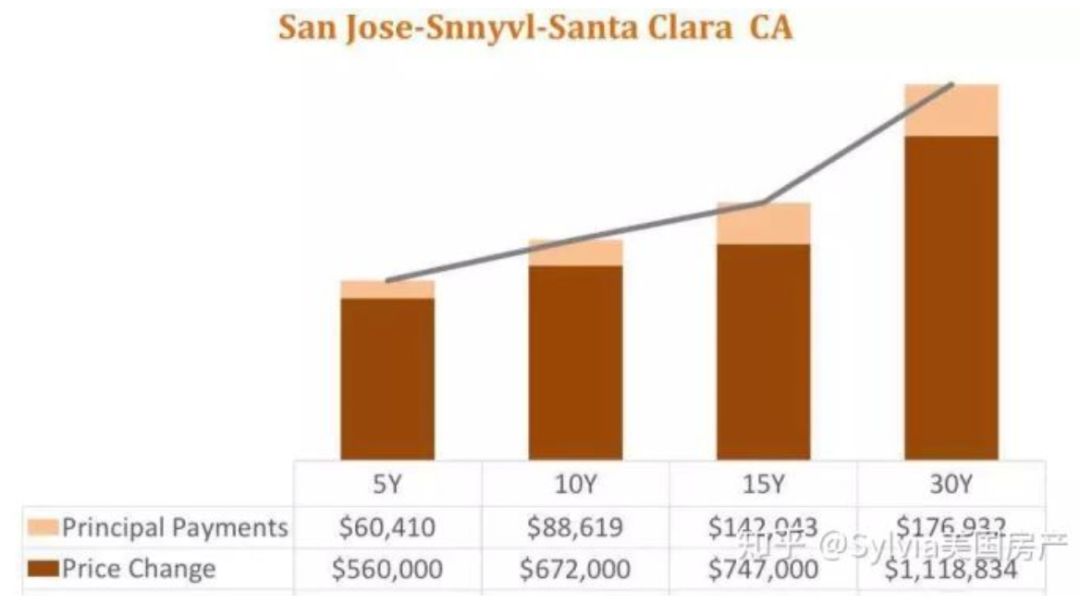
Image source: Know about @Sylvia 美国 房产
Contribution of Silicon Valley Technology Companies to House PricesIs indispensable. In itself, Silicon Valley house prices are approaching the highest value in the United States, and today with growth, it is already beyond the reach of ordinary people in the region.
In the United States, the median house price is generally in the $ 6,000-10,000 range. This number in the Silicon Valley area is horrible at around $ 30,000. At the beginning of this year, real estate transactions in cities in the Silicon Valley region generally exceeded $ 1.5 million. This is beyond reach for Americans in other regions.
The rise in house prices has further driven the steep increase in rents. Even renting a house in Silicon Valley today is a huge expense.
Due to the surge in housing prices and consumption levels, the income levels of many ordinary workers working in Silicon Valley have fallen sharply in the region. Although the income of engineers in technology companies is high, the income of ordinary workers has not increased significantly. The consequence is that a large number of people cannot afford to rent a house, the economy collapses, or it goes bankrupt, resulting in homelessness and housing, and they have to wander the streets.
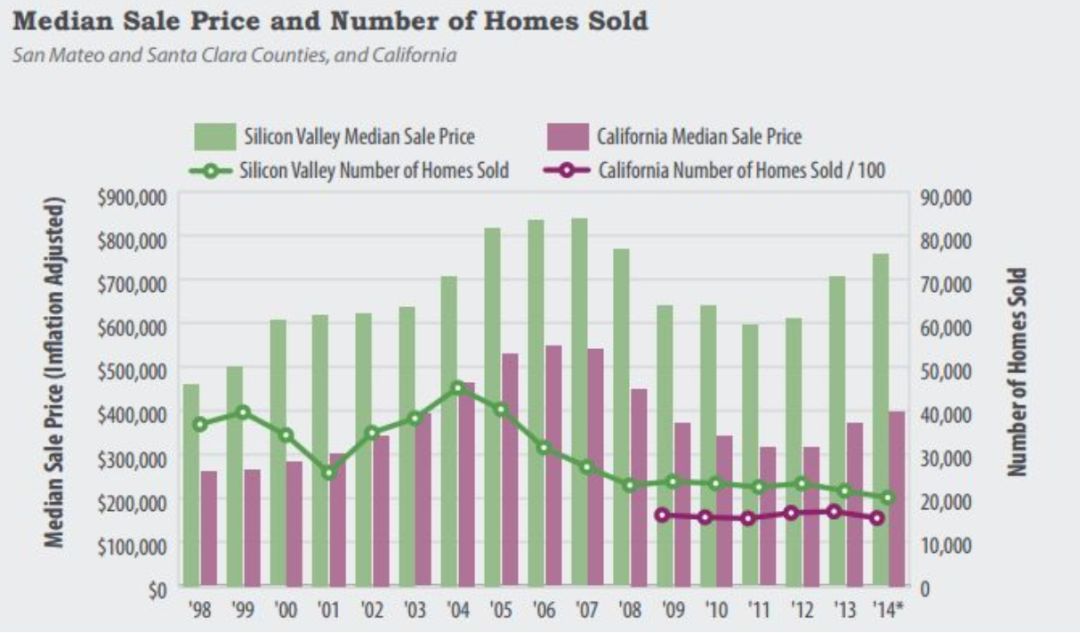
02 The pain of Silicon Valley
Eating and living is the basic aspiration of ordinary people. But when living becomes a big problem, the contradictions inspired by the two are obviously easy to see.
Although the rise of technology companies has promoted local development and living standards, the increase in income for the general public is far less than the rise in local consumption and housing prices. Increasing disagreements have caused Silicon Valley Aborigines to have long hated technology companies.
In early 2018, Google Apple’s commuter bus was hit by multiple falling stones and air guns, causing the glass to break and fortunately no employees were injured.

During the entire week, as many as six buses were hit by broken windows. The Aboriginal attack even forced Google Apple to change its working hours to accommodate the extended working hours caused by the change of route.
This is the anger of Silicon Valley Aboriginals.
Since 2013, Silicon Valley Aboriginal people’s resistance to technology companies has become more frequent and fierce. then,On the highways where technology companies often commute, buses have been blocked, protested, and graffiti buses have occurred.
“Return to our free San Francisco”, with such a slogan, angry people carried the coffin and surrounded the technology company’s commuter bus.

After that, whenever a technology company goes public, there will be Silicon Valley Aborigines holding a sign and marching in front of the company to protest. When Twitter went public, the people held a sign saying “The listing is yours, we have nothing” to protest in front of the door.
The rise of Silicon Valley technology companies has sacrificed the ordinary lives of tens of thousands of ordinary people. The Silicon Valley Aborigines had to stand up and protest. Even in 2014, when Google Legal expelled a tenant in a San Francisco home, such dissatisfaction with technology companies triggered a large-scale protest march, which once made local police very nervous.
Silicon Valley companies need to sacrifice the living space of the indigenous peoples, and even force them to move out of vacated places to build new office buildings for technology companies. In 2016, the largest “forced relocation” in the local area was born. Due to the need to make room for Silicon Valley companies, 216 residential people and units called Reserve Apartment will be relocated. Most of these residents have lived here for more than 10 years.
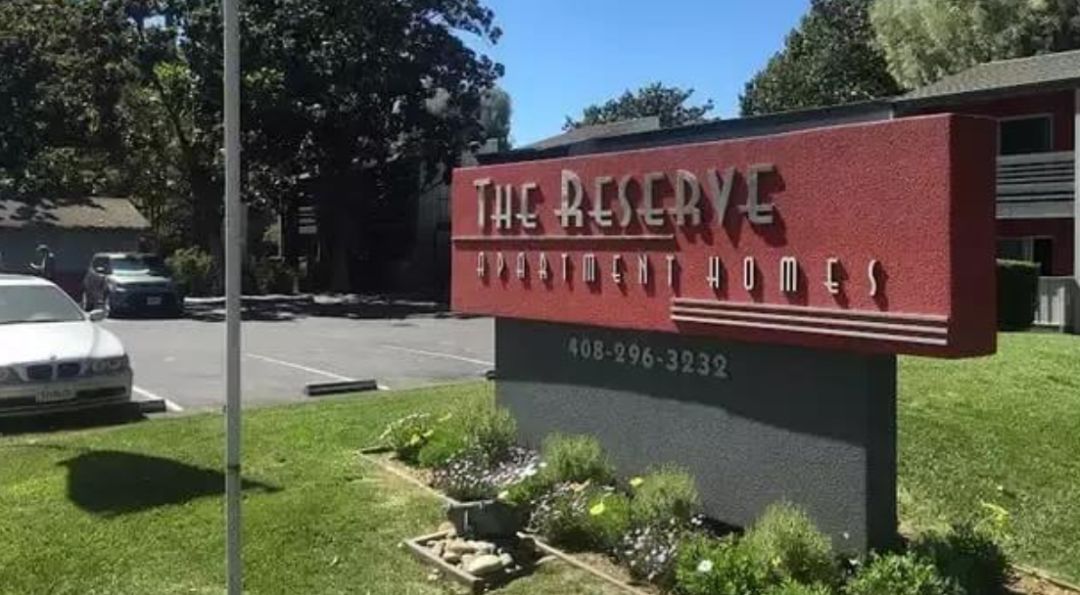
When they were forced to move out, they found that the house prices and rents in the surrounding areas could not afford it.
On one side is the gathering place for the largest number of homeless people in the United States, and on the other side is the high-rise buildings of Silicon Valley. The conflict between the two is inevitable.
Facing the pressing of Silicon Valley companies, the indigenous people also expressed their dissatisfaction in various ways. Bicycles in the Google park are lost every month by hundreds of vehicles, even in remote areas. It was all because dissatisfied Aboriginal people in Silicon Valley stole it and left it in a deserted place. Some even appeared on the US-Mexico border.

The root cause of the hatred of Silicon Valley aboriginal people for technology companies is that it has increased local consumption, but it has not contributed to its level. For the lives of the local indigenous peoples, the barriers and barriers have become higher and higher.
As the interviewee who stole the Google Park ’s self-employed frankly said, “They ’ve caused so much inconvenience to us, why did we steal a bike?”
Clashes between Silicon Valley aborigines and technology companies are no longer rare.
03 really works?
The increasingly tense relationship between indigenous people and technology companies, as well as frequent protests, and their employees ‘demands for housing have led to the recent expansion of technology companies’ housing investment.
Apple announced in November that it will donate 2.5 billion US dollars to the local area, of which 1 billion will be used to build affordable housing, 1 billion will be used for low-interest housing loans, and all of Apple’s land valued at 300 million dollars will be used to build affordable housing. .
At the same time, Apple also announced that it will also set up a $ 150 million guaranteed housing fund, and will increase the proportion of home ownership for veterans and low-income people.
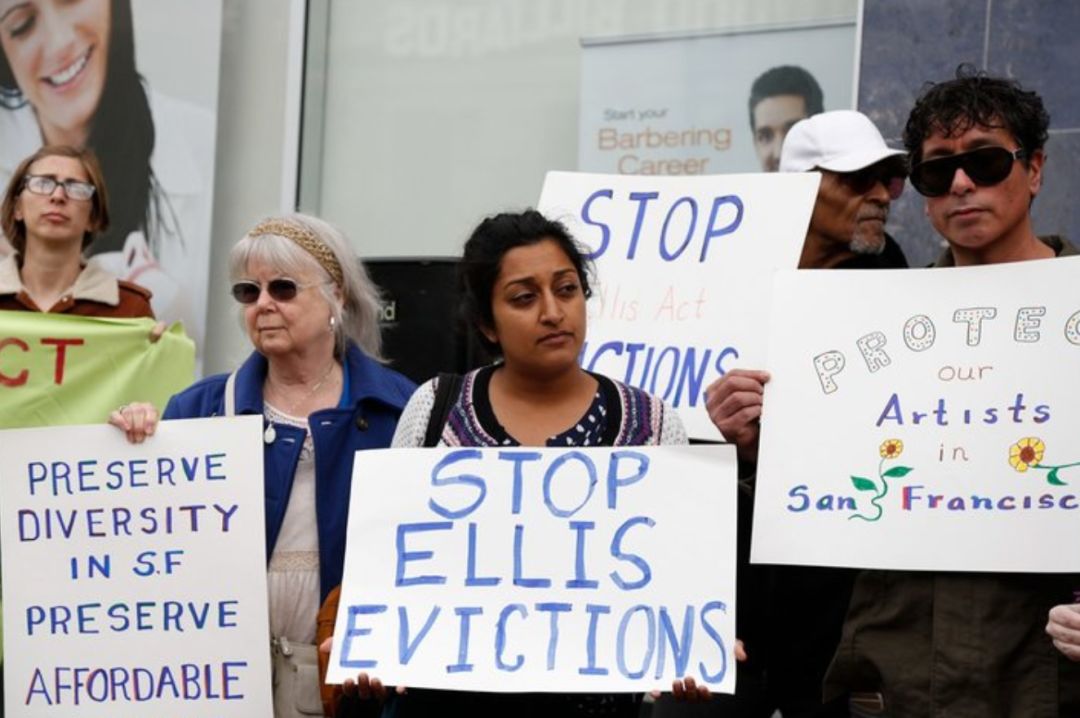
Not only Apple, Google has promised to invest $ 1 billion to solve the housing problem. Facebook participated in the establishment of an organization called Partnership for the Bay ’s future, which will raise $ 500 million for housing. Microsoft donated $ 500 million, and Amazon reportedly has invested $ 38 billion in local economic development.
The tech company boss finally funded the problem, but is it really useful?
Billions of dollars may seem like a lot, but there are very few left over among the huge number of homeless and low-income people. And the investment of technology companies has not announced how long it will last. When this money is exhausted, what should the remaining homeless people do?
In the past eight years, the population of the San Francisco area has grown by 8%, but the number of houses has only increased by 5%, and even rents have increased by 21%. Is it too late to announce funding at this time?
The root cause of the current contradictions in Silicon Valley is that the rise of technology companies has not brought about changes in the incomes of ordinary people. The income of ordinary workers has even decreased compared with the past even when the consumption level has surged. This root contradiction cannot be resolved at present. Perhaps it will continue for a long time.
Facing the deepening conflict between Silicon Valley’s indigenous people and technology companies, and the urgent situation of affordable housing, technology companies should continue to increase investment to help local governments solve problems in order to alleviate the hostile feelings of indigenous peoples against technology companies.
The commitment and investment of technology companies will be effective in the future, and it remains to be seen.



Eating and living is the basic aspiration of ordinary people. But when living becomes a big problem, the contradictions inspired by the two are obviously easy to see.
Although the rise of technology companies has promoted local development and living standards, the increase in income for the general public is far less than the rise in local consumption and housing prices. Increasing disagreements have caused Silicon Valley Aborigines to have long hated technology companies.
In early 2018, Google Apple’s commuter bus was hit by multiple falling stones and air guns, causing the glass to break and fortunately no employees were injured.

During the entire week, as many as six buses were hit by broken windows. The Aboriginal attack even forced Google Apple to change its working hours to accommodate the extended working hours caused by the change of route.
This is the anger of Silicon Valley Aboriginals.
Since 2013, Silicon Valley Aboriginal people’s resistance to technology companies has become more frequent and fierce. then,On the highways where technology companies often commute, buses have been blocked, protested, and graffiti buses have occurred.
“Return to our free San Francisco”, with such a slogan, angry people carried the coffin and surrounded the technology company’s commuter bus.

After that, whenever a technology company goes public, there will be Silicon Valley Aborigines holding a sign and marching in front of the company to protest. When Twitter went public, the people held a sign saying “The listing is yours, we have nothing” to protest in front of the door.
The rise of Silicon Valley technology companies has sacrificed the ordinary lives of tens of thousands of ordinary people. The Silicon Valley Aborigines had to stand up and protest. Even in 2014, when Google Legal expelled a tenant in a San Francisco home, such dissatisfaction with technology companies triggered a large-scale protest march, which once made local police very nervous.
Silicon Valley companies need to sacrifice the living space of the indigenous peoples, and even force them to move out of vacated places to build new office buildings for technology companies. In 2016, the largest “forced relocation” in the local area was born. Due to the need to make room for Silicon Valley companies, 216 residential people and units called Reserve Apartment will be relocated. Most of these residents have lived here for more than 10 years.

When they were forced to move out, they found that the house prices and rents in the surrounding areas could not afford it.
On one side is the gathering place for the largest number of homeless people in the United States, and on the other side is the high-rise buildings of Silicon Valley. The conflict between the two is inevitable.
Facing the pressing of Silicon Valley companies, the indigenous people also expressed their dissatisfaction in various ways. Bicycles in the Google park are lost every month by hundreds of vehicles, even in remote areas. It was all because dissatisfied Aboriginal people in Silicon Valley stole it and left it in a deserted place. Some even appeared on the US-Mexico border.
The root cause of the hatred of Silicon Valley aboriginal people for technology companies is that it has increased local consumption, but it has not contributed to its level. For the lives of the local indigenous peoples, the barriers and barriers have become higher and higher.
As the interviewee who stole the Google Park ’s self-employed frankly said, “They ’ve caused so much inconvenience to us, why did we steal a bike?”
Clashes between Silicon Valley aborigines and technology companies are no longer rare.
03 really works?
The increasingly tense relationship between indigenous people and technology companies, as well as frequent protests, and their employees ‘demands for housing have led to the recent expansion of technology companies’ housing investment.
Apple announced in November that it will donate 2.5 billion US dollars to the local area, of which 1 billion will be used to build affordable housing, 1 billion will be used for low-interest housing loans, and all of Apple’s land valued at 300 million dollars will be used to build affordable housing. .
At the same time, Apple also announced that it will also set up a $ 150 million guaranteed housing fund, and will increase the proportion of home ownership for veterans and low-income people.

Not only Apple, Google has promised to invest $ 1 billion to solve the housing problem. Facebook participated in the establishment of an organization called Partnership for the Bay ’s future, which will raise $ 500 million for housing. Microsoft donated $ 500 million, and Amazon reportedly has invested $ 38 billion in local economic development.
The tech company boss finally funded the problem, but is it really useful?
Billions of dollars may seem like a lot, but there are very few left over among the huge number of homeless and low-income people. And the investment of technology companies has not announced how long it will last. When this money is exhausted, what should the remaining homeless people do?
In the past eight years, the population of the San Francisco area has grown by 8%, but the number of houses has only increased by 5%, and even rents have increased by 21%. Is it too late to announce funding at this time?
The root cause of the current contradictions in Silicon Valley is that the rise of technology companies has not brought about changes in the incomes of ordinary people. The income of ordinary workers has even decreased compared with the past even when the consumption level has surged. This root contradiction cannot be resolved at present. Perhaps it will continue for a long time.
Facing the deepening conflict between Silicon Valley’s indigenous people and technology companies, and the urgent situation of affordable housing, technology companies should continue to increase investment to help local governments solve problems in order to alleviate the hostile feelings of indigenous peoples against technology companies.
The commitment and investment of technology companies will be effective in the future, and it remains to be seen.
